
ARM CARS


















PORSCHE CAYENNE ARM CAR
Our Porsche Cayenne Twin Turbo is engineered for performance, speed, and stability both on and off-road. It serves as an exceptional platform for our 12-foot Ultra Arm, providing the power and precision required for high-speed camera pursuits while maintaining superior ride comfort and control.
The vehicle is fully customized to accommodate up to five crew members, allowing the complete camera movement team to ride together for maximum efficiency, communication, and workflow during complex tracking or chase sequences.
Specs:
Top Speed: 120 mph
Payload w/ Remote Head: 70 lbs
Remote Head: MoVI XL
5 sec 360º Swing
3 Sec 90º deg Lift
Operating Temp: MIN: -30ºF/ -34ºC, MAX: 110ºF/ 43ºC
Motor Torque: Tilt axis, 1050ft-lbs peak torque, Swing axis 420ft-lbs peak torque
Passive Arm Dampening: 14" Z-Axis, 45º Pitch and Roll Dampening (Adjustable dampening)
Weather Rating: Water Resistant (IP65)


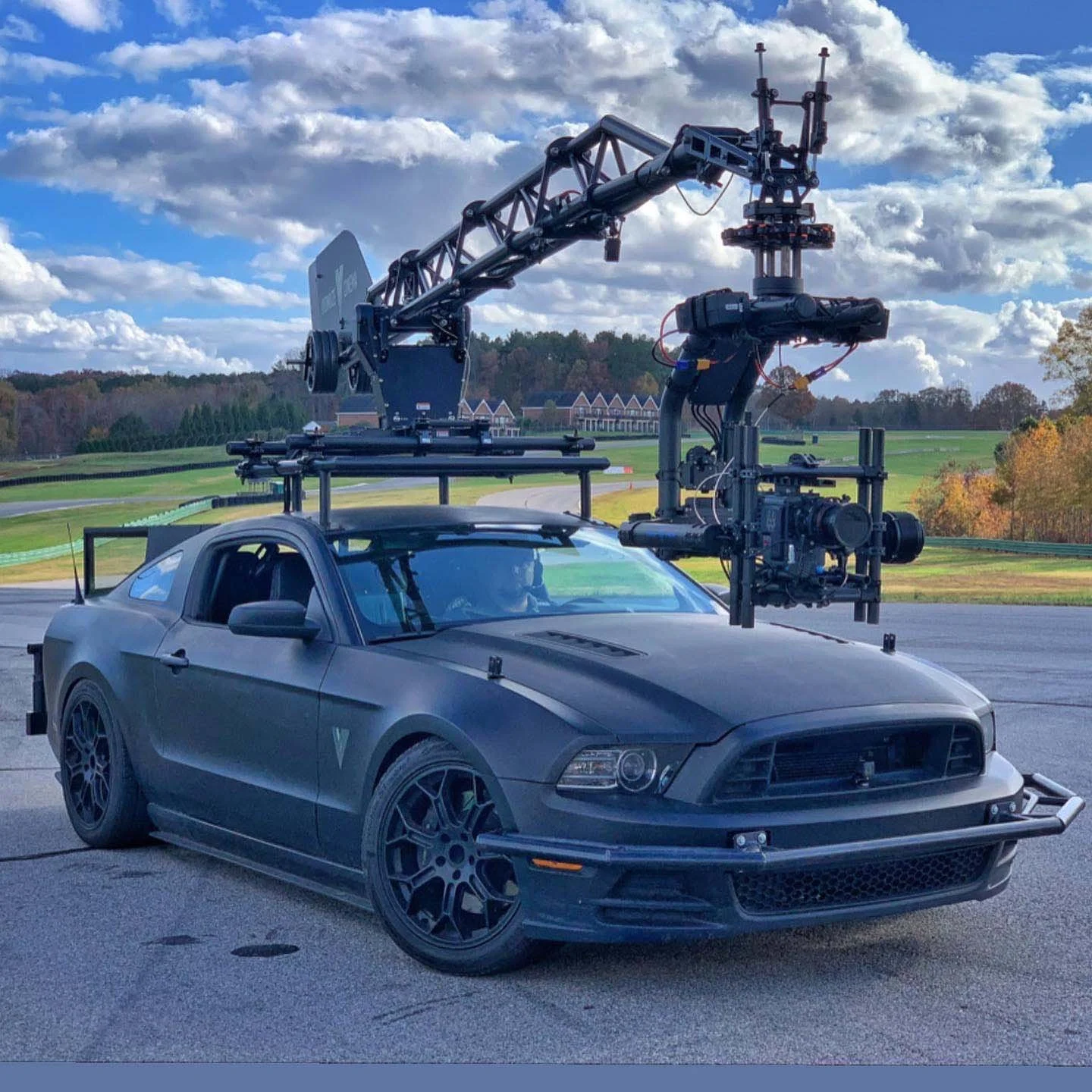
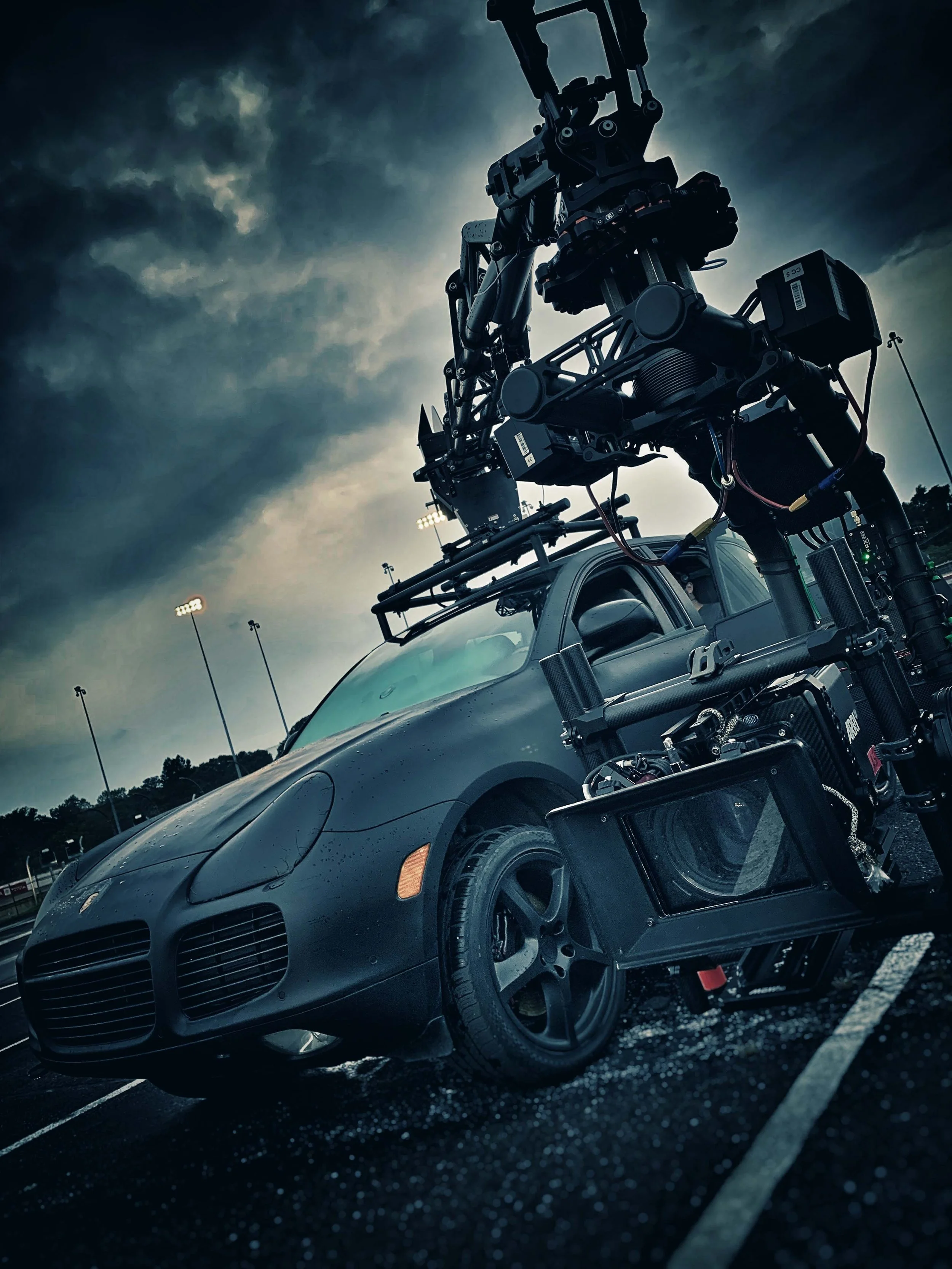




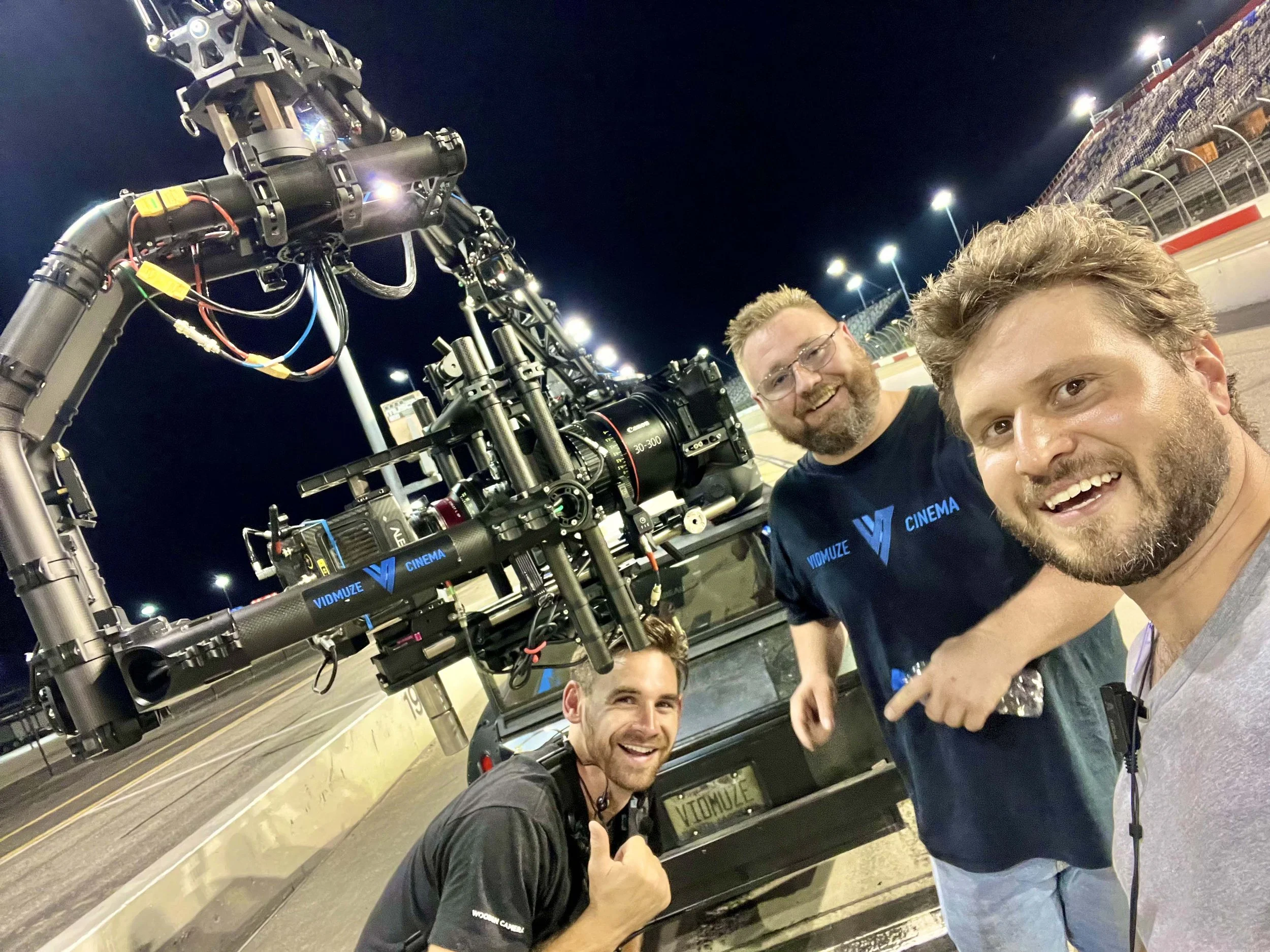



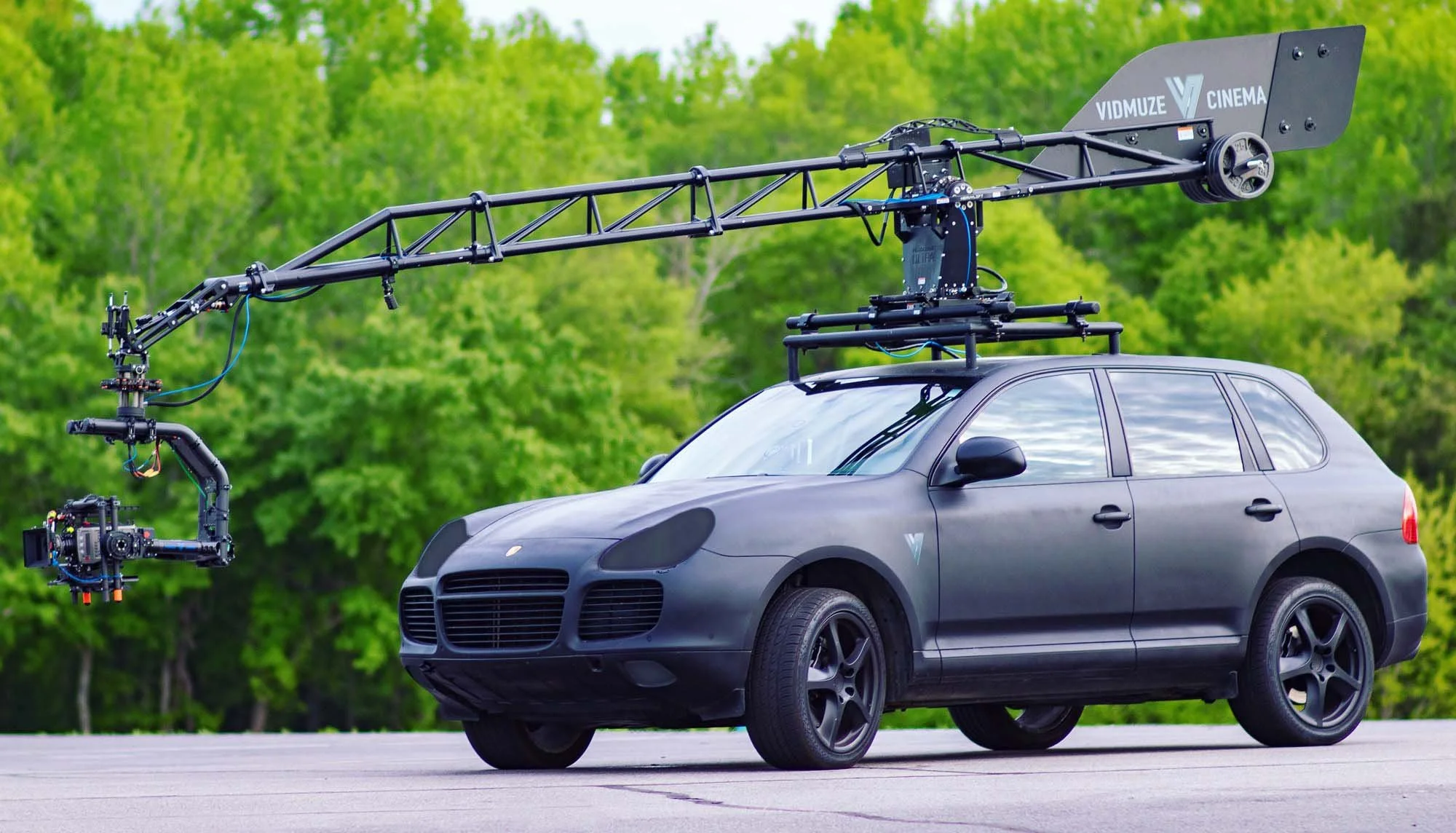

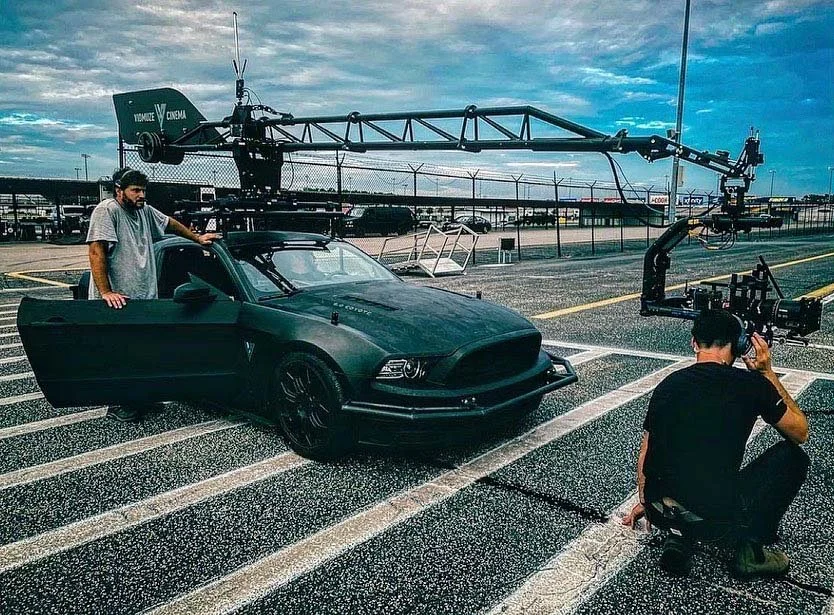


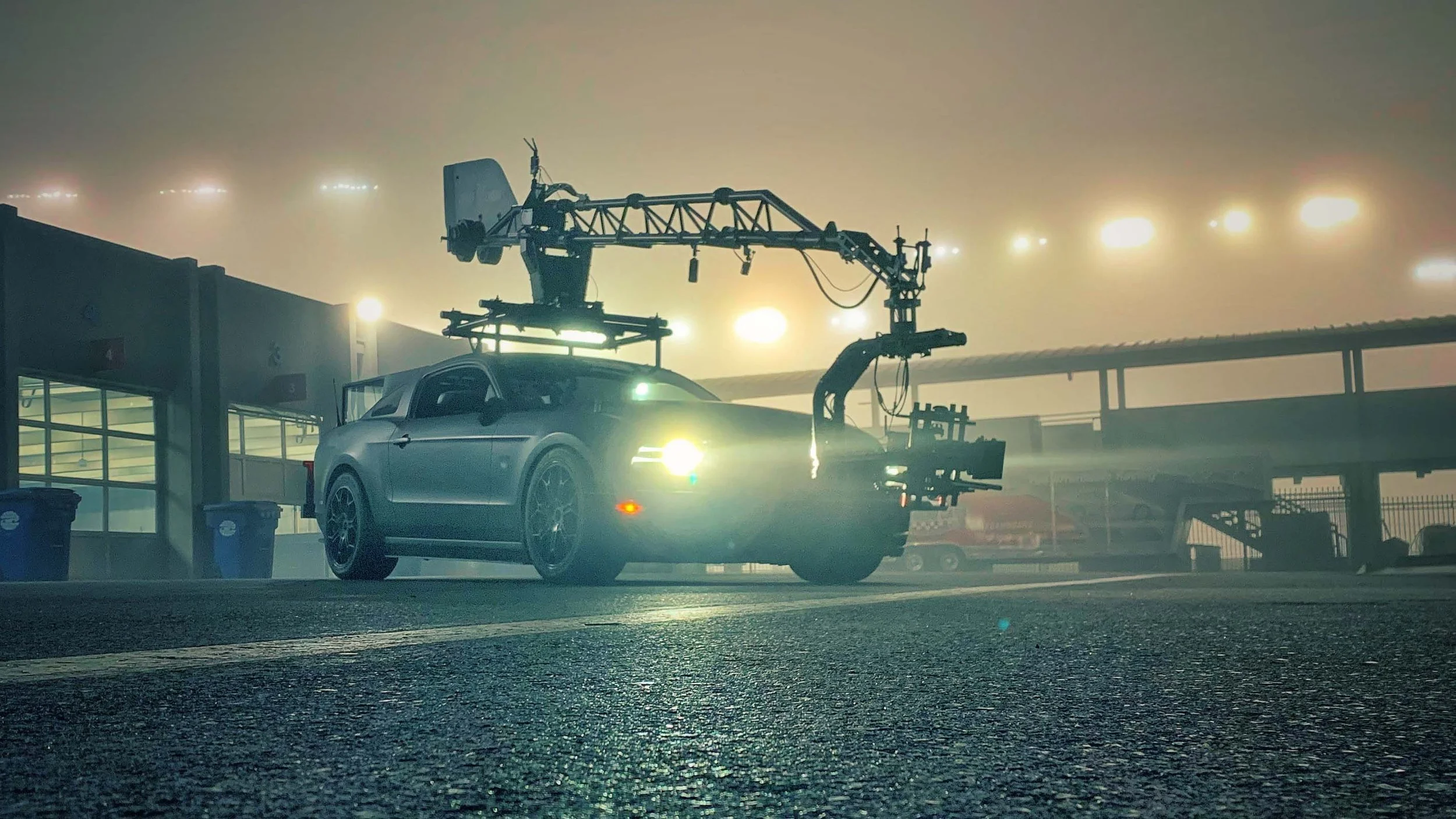

SALEEN MUSTANG ARM CAR
Our custom 650-horsepower Saleen Mustang is a purpose-built race and camera car, designed to deliver unmatched performance on the track. Combining raw speed, precision steering, and exceptional handling, this one-of-a-kind vehicle is engineered specifically for dynamic, high-speed cinematography.
Bringing Ford performance to a new level of cinematic excellence, our Saleen is equipped with a 12-foot Ultra Arm and a MōVI XL remote head, providing filmmakers with smooth, stable, and agile camera movement at any speed. For extreme conditions, we offer additional configurations such as a Black Arm system for enhanced stabilization or hard-mounted camera setups for maximum velocity shots.
The Saleen’s interior has been custom-outfitted to accommodate up to five crew members, enabling a full camera movement team to operate together efficiently and communicate seamlessly throughout the shoot — ensuring precision, safety, and speed in every take.
Specs:
Top Speed: 120 mph
Payload w/ Remote Head: 65 lbs
Remote Head: MoVI XL
5 sec 360º Swing
3 Sec 90º deg Lift
Operating Temp: MIN: -30ºF/ -34ºC, MAX: 110ºF/ 43ºC
Motor Torque: Tilt axis, 1050ft-lbs peak torque, Swing axis 420ft-lbs peak torque
Passive Arm Dampening: 14" Z-Axis, 45º Pitch and Roll Dampening (Adjustable dampening)
Weather Rating: Water Resistant (IP65)

Arm Cars & U-Crane / Russian Arm Services
Dynamic Camera Vehicles for High-Speed Cinema
At VidMuze Cinema, we offer elite arm car, Russian Arm, and U-Crane services that bring next-level motion capture to your production. Whether you're filming car chases, action sequences, or cinematic tracking shots, our precision-engineered camera vehicles deliver speed, stability, and creative freedom. As specialists in camera movement, we ensure your shots are not just dramatic—but safe, repeatable, and visually stunning.
What Is an Arm Car / Russian Arm / U-Crane?
Sometimes called a camera car or pursuit vehicle, an arm car is a custom vehicle fitted with a robotic, gyro-stabilized crane arm. This system allows the camera to move in 3D space around the car—up, down, sideways, swinging in arcs or circles—while the vehicle is in motion.
Historically known as the “Russian Arm,” the system is now commonly called the U-Crane, a name adopted by its original manufacturer, Filmotechnic.
The U-Crane’s advanced design allows for more compact installations, lower profiles, and flexible mounting options—ideal for tight roads, race tracks, tunnels, or low-clearance shots.
Why Use Arm Cars / U-Crane on Your Shoot?
1. Capture High-Speed, Dynamic Shots
With an arm car, your camera can keep pace with performance vehicles—rolling, pivoting, and swinging alongside the action. It achieves angles that traditional mounts or drones simply can’t match at speed.
2. Creative Angles & 360° Movement
The robotic arm allows full 360° pan, tilt, and swing motions—ideal for executing rotating tracking shots, chasing curves, or arcing over the scene.
3. Stability & Precision
Gyro-stabilization and damping systems compensate for road vibration, speed changes, and motion shifts. The result: smooth, cinematic footage even on dynamic terrain or under challenging conditions.
4. Safety & On-Set Control
Since the arm is tethered to a controlled motion system on the vehicle, you retain greater control and safety. Operators can dial in motion parameters, restrict zones, and integrate with the driver and camera team.
Why VidMuze Cinema Is Your Best Choice for Arm Car / U-Crane Services
Specialized Expertise in Camera Movement
We don’t just rent gear — we are camera movement specialists. Our experience spans drones, cable cams, FPV systems, and arm cars across film, TV, and commercial projects. We know how to integrate motion systems seamlessly into your production.
Custom-Tuned Vehicles for Cinematic Performance
Saleen Mustang (650 HP) — built for racetrack pursuits, tight curves, and high-level handling.
Porsche Cayenne Twin Turbo — a prime option for high-speed chasing with crew comfort.
Each vehicle is outfitted with our 12′ Ultra Arm, MōVI XL remote head, and optional Black Arm / hard-mount configurations for extreme speed scenarios.
Crew-Centric Design & Efficiency
Each camera car accommodates up to five crew members, enabling the full camera movement team to travel together. This ensures real-time coordination, faster setup, and intuitive communication during complex shooting sequences.
Rigging, Safety & Motion Control Integration
We don’t just bring the car — we bring experienced operators, safety protocols, motion control tuning, and pre-rigging services. Our motion control systems let us preset in/out paths, limit movement boundaries, and consistently reproduce shots across takes.
Southeast & Nationwide Reach
Based in Asheville, NC, VidMuze serves Charlotte, Atlanta, Charleston, Wilmington, and nationwide. For productions anywhere in the U.S., we provide logistical support, pre-shoot planning, and full deployment of our arm car systems.
Spec Highlights & Capabilities
Top Speed (vehicle + rig): ~120 mph
Payload with remote head: 60–70 lbs
360° swing in ~5 seconds / 90° lift in ~3 seconds
Robust damping systems and vibration isolation
Weather-resistant and high/low temperature operation ranges
Typical Use Cases for Arm Cars / U-Crane:
High-speed car chases, race sequences, and stunt shots
Tracking or orbiting moving vehicles in tight environments
Elevated or over-the-top dynamic angles in action scenes
Shots requiring complex movement around subjects in motion
Replacement or supplement to drone shots during restricted airspace or nighttime shoots
Elevate your cinematography with motion you can trust.
Book VidMuze Cinema’s Arm Car / U-Crane / Russian Arm services on your next production. Let us bring the perfect blend of speed, precision, and cinematic artistry you won’t find anywhere else.


